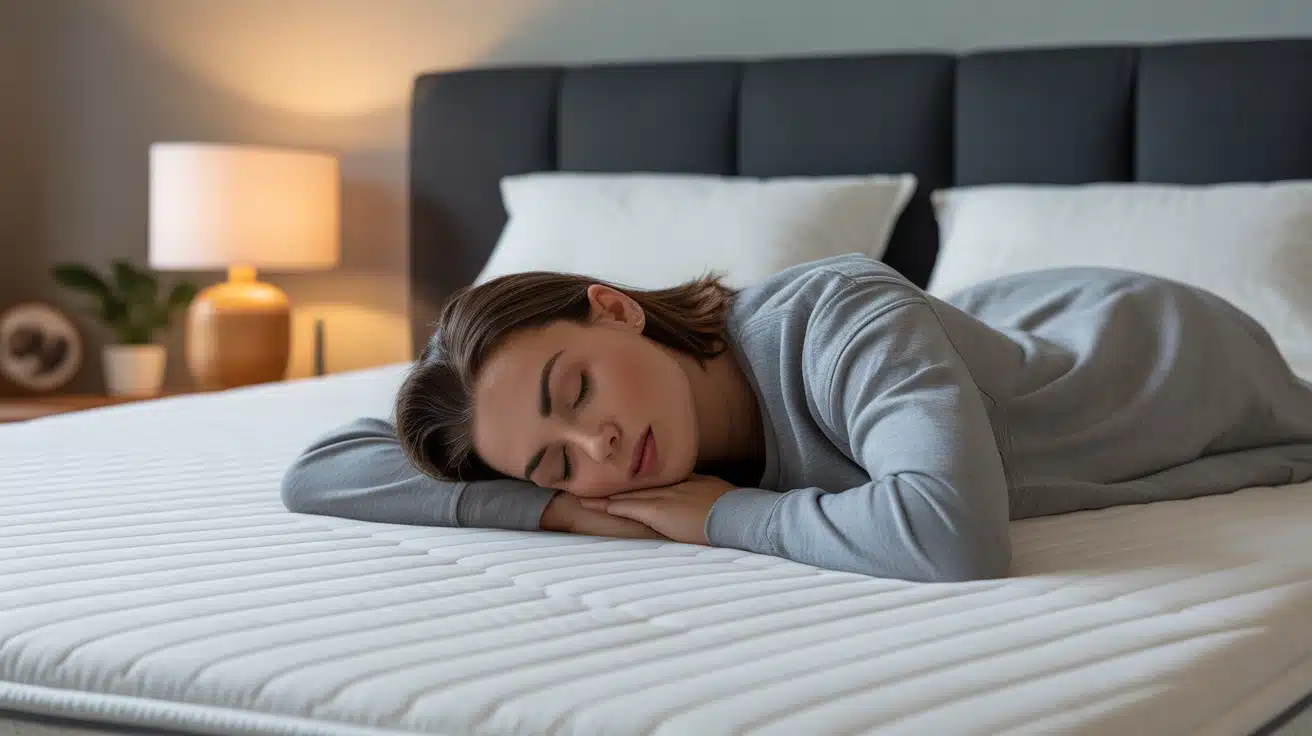Understanding Mattress Firmness Levels and What’s Best for Your Sleep Style
Mattress firmness ranges from soft (1-3) to medium (4-6) to firm (7-10), each offering different levels of support and comfort. Soft mattresses are ideal for side sleepers and lighter individuals, while medium-firm mattresses are the most versatile choice for different sleep styles.
Firm mattresses provide strong support, making them best for back and stomach sleepers, as well as heavier individuals. Choosing the right firmness depends on sleep position, body weight, and personal comfort preferences, with mattress trials and toppers helping to fine-tune the feel.
Have you ever woken up with aches and pains, wondering if your mattress is to blame? The firmness of your mattress plays a crucial role in how well you sleep, affecting everything from spinal alignment to pressure relief. But with so many options available, how do you know which firmness level is right for you?
Choosing the perfect balance of comfort and support isn’t just about personal preference—it depends on your sleeping position, body weight, and even health conditions. In this guide, we’ll break down different mattress firmness levels and help you figure out which one suits your sleep style best.
What are Mattress Firmness Levels?
When shopping for a new bed, you’ll often see mattresses rated on a firmness scale from 1 to 10. This scale helps define how soft or firm a mattress feels when you lie down. While firmness is somewhat subjective, here’s a general breakdown:
- Soft (1-3) – Plush, contouring, and allows deep sinkage.
- Medium (4-6) – A balance of comfort and support, the most popular choice.
- Firm (7-10) – Less cushioning, more support, and keeps the body on top of the mattress rather than sinking in.
Firmness isn’t just about how a mattress feels—it affects your spine’s alignment, pressure points, and overall sleep quality. The right level depends on various factors like body weight, preferred sleep position, and any specific back or joint concerns.
Soft Mattresses: Who Are They Best For?
Soft mattresses, rated between 1 and 3 on the firmness scale, offer a plush, sinking feel. They contour closely to the body, providing excellent pressure relief, especially for sensitive areas like the shoulders and hips.
These mattresses are best suited for:
- Side sleepers – The extra cushioning helps relieve pressure points.
- Lighter individuals – People who weigh under 60kg may find soft mattresses more comfortable since they don’t sink as deeply.
- Those who love a “hugging” feel – If you enjoy sinking into your mattress rather than lying on top of it, a soft bed could be ideal.
Potential downsides:
- May not provide enough support for heavier individuals, leading to spinal misalignment.
- Can make movement harder, which isn’t ideal for combination sleepers.
- Might retain more heat, depending on the materials used.
If you’re someone who prefers a soft, cloud-like sleep experience, a plush mattress could be the right choice. However, for those needing more support, a medium or firm mattress may be a better fit. Choosing the right mattress New Zealand brands offer can make all the difference.
Medium Mattresses: The Most Popular Choice
Medium-firm mattresses, rated between 4 and 6 on the firmness scale, are often considered the “sweet spot” for most sleepers. They offer a balance between softness and support, making them a versatile option for different sleep styles.
These mattresses work well for:
- Combination sleepers – If you shift between sleeping on your side, back, or stomach, a medium mattress provides adaptability.
- Couples – Since medium-firm mattresses accommodate various sleeping positions, they’re great for partners with different preferences.
- People with mild back pain – The mix of cushioning and support can help maintain spinal alignment without being too rigid.
Medium mattresses provide enough contouring for pressure relief while still offering support to prevent sinking too deeply. That’s why they’re one of the most popular choices.
Firm Mattresses: Who Should Consider Them?
Firm mattresses, rated 7 to 10 on the scale, have minimal sinkage and provide strong support. They keep your body lifted rather than cradled, which can be beneficial for certain sleepers.
These mattresses are best for:
- Back sleepers – Firm mattresses help keep the spine in a neutral position.
- Stomach sleepers – A firmer surface prevents the hips from sinking too much, which can cause lower back strain.
- Heavier individuals – People who weigh over 90kg typically find firmer mattresses more supportive, reducing the risk of sagging.
Potential downsides:
- May feel too hard for lighter individuals or side sleepers.
- Can cause pressure buildup on shoulders and hips.
- Less contouring, which some people find uncomfortable.
If you prefer a more supportive, no-sink feel, a firm mattress may be the best choice for your needs.
How to Choose the Right Firmness for You
Still unsure which firmness level suits you best? Consider these factors:
- Your Sleep Position – Side sleepers typically prefer softer mattresses, while back and stomach sleepers need firmer options.
- Your Body Weight – Lighter individuals may enjoy plush beds, while heavier sleepers require firmer support.
- Any Health Concerns – If you suffer from back or joint pain, medium-firm or firm mattresses may provide better spinal support.
- Personal Preference – Some people love the feeling of sinking into a soft bed, while others prefer a firm, supportive surface.
Testing and Adjusting Firmness Levels
Buying a mattress is a big investment, so testing it before committing is essential. Here’s how to ensure you get the right firmness:
- Try before you buy – Visit a mattress showroom to lie down and test different firmness levels.
- Look for sleep trials – Many brands offer 30- to 100-night trial periods, allowing you to return or exchange the mattress if it’s not right.
- Use mattress toppers – If your mattress is too firm, a soft topper can add cushioning. Likewise, a firm topper can provide extra support.
Conclusion
Choosing the right mattress firmness is crucial for quality sleep. Whether you need a soft, medium, or firm mattress depends on factors like your sleep position, body weight, and personal comfort preferences. Soft mattresses provide plush contouring, medium-firm options offer balanced support, and firm mattresses keep the spine aligned.
To find your perfect match, test different firmness levels, take advantage of sleep trials, and consider any specific sleep needs you have. A well-chosen mattress can make all the difference in getting restful, pain-free sleep every night.







